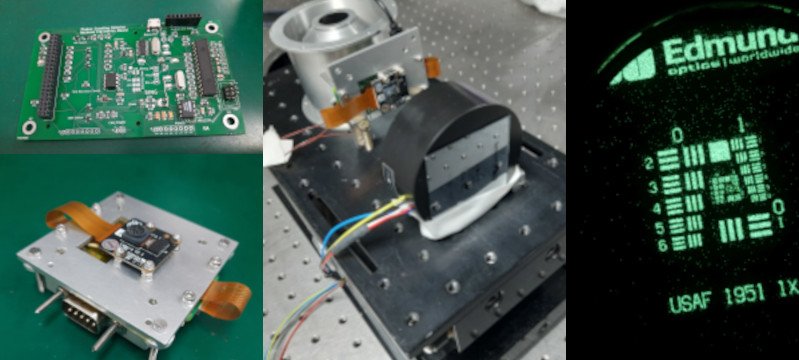PiCUP
In the ultraviolet (UV) regime, photons from astronomical sources are very few compared to the visible or infrared (IR) wavelength bands. Detectors used in UV telescopes usually employ a photon-counting mode of operation. These detectors usually have an image intensifier sensitive to UV photons and a readout mechanism to count the number of events triggered by these photons.The development of readouts for these detectors is resource-intensive and expensive.
In our endeavor to develop affordable systems for UV astronomy, we have developed a low-cost UV photon-counting detector processing unit that employs a Raspberry Pi (RPi) with its built-in readout to perform the photon-counting operation. Our system can operate in both 3x3 and 5x5 pixels window modes at 30 frames per second (fps). The system can be built quickly from readily available commerical-off-the-shelf (COTS) components and is thus useful for small satellite missions.
Our unit named PiCUP (Pi for Counting UV Photons) do not require the optical-fibre funnel/taper employed in such detectors to map the 40mm intensifier unit to smaller CMOS imaging chips. This brings down the total weight of the detector unit by almost 1 kg, making it best suited for small UV space missions.
System Design

The detector system design consists of two parts: An MCP (micro-channel plate) based image intensifier and a camera with the readout and processing electronics. Incident UV photons generate photo-electrons that are accelerated through the MCP maintained at a large potential difference. This results in a cloud of electrons hitting a phosphor screen, generating an optical glow peaking at around 530nm. The glow is imaged using a Raspberry Pi camera system, and centroids of each of these events are calculated.

Block diagram of the photon counting detector with the Raspberry Pi based imaging camera setup and the single event recovery circuit

Schematic of the Raspberry Pi camera readout and on-board photon counting implementation.
